Guoren Health Online: Focus on the health of the Chinese people, sharing health information, wellness knowledge, mental health, TCM health preservation, healthy diet, dietary therapy, health knowledge, common life knowledge, sexual health, avoiding sub-health, and promoting a healthy mindset! Understanding health preservation allows you to take charge of your own body! Let health preservation become a habit! Below is today’s shared content.
Click the image to enter the Guoyi Gufang Health Preservation Mall
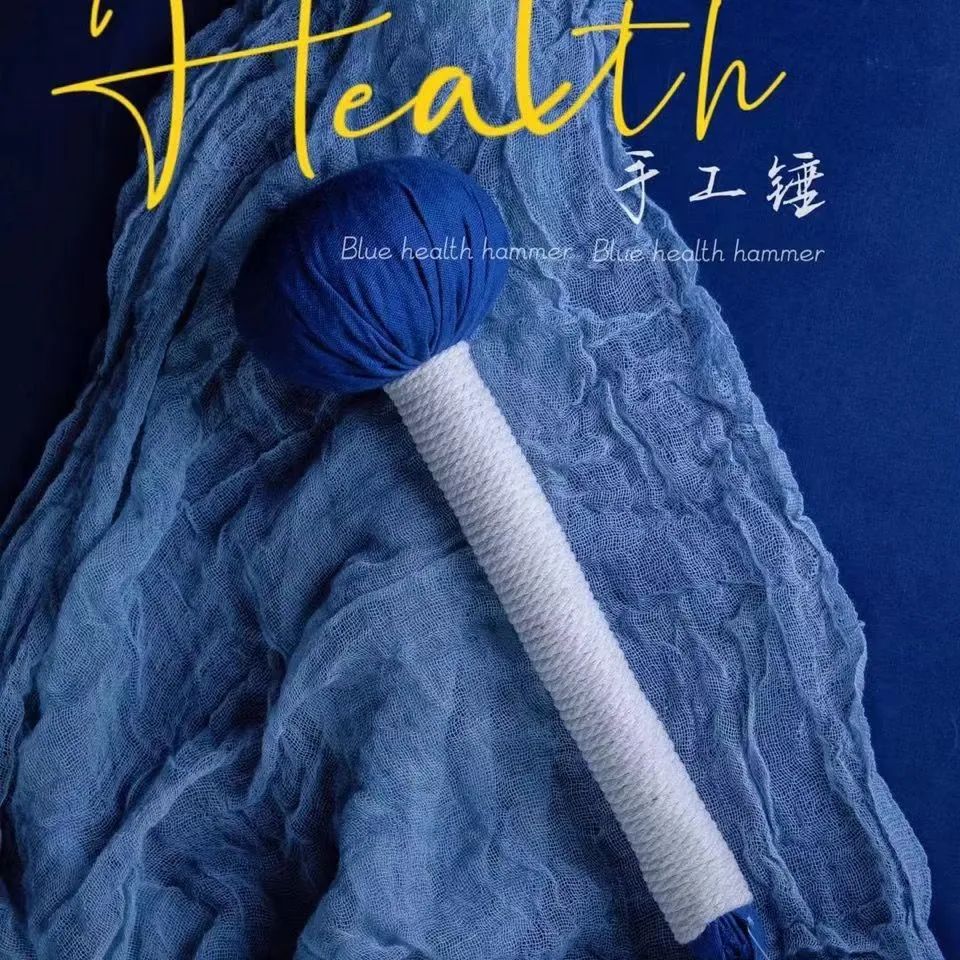

Ginger is not only a seasoning but also an important medicinal material in Traditional Chinese Medicine (TCM). The earliest medicinal record of ginger is found in the “Shennong Bencao Jing”, which states that dried ginger (gan jiang) “is used for chest fullness, cough, counterflow of qi, warming the middle, stopping bleeding, inducing sweating, expelling wind-dampness, and treating diarrhea and dysentery. Fresh ginger (sheng jiang) is especially good.” Over time, many medicinal preparations have been derived from ginger, each with different effects. This article introduces how TCM utilizes ginger, following the order of its medicinal use.
Dried Ginger (Gan Jiang)

The first is dried ginger, which is first recorded in the “Shennong Bencao Jing”. The effects of dried ginger include warming the middle and dispersing cold, warming yang and unblocking meridians, and warming the lungs and transforming phlegm. It is a warming interior medicine commonly used to treat cold pain in the abdomen, cough with cold phlegm, vomiting, diarrhea, and weak pulse with cold limbs.Dried ginger is often used in combination with Aconite (Fu Zi). Examples of formulas include: Li Zhong Wan, Fu Zi Li Zhong Wan, Si Ni Tang, Xiao Qing Long Tang, and Zhu Che Wan. Among them, Li Zhong Wan is derived from the “Shang Han Lun” and contains ginseng (Ren Shen), Bai Zhu (White Atractylodes), roasted licorice (Zhi Gan Cao), and dried ginger. Its effects are to warm the middle and disperse cold, tonifying qi and strengthening the spleen. It is used for abdominal pain and diarrhea caused by spleen and stomach deficiency and cold.Fu Zi Li Zhong Wan, derived from the “Tai Ping Hui Min He Ji Ju Fang”, adds a very warming Aconite to the formula, enhancing its warming effect. The original text states, “It treats cold weakness of the spleen and stomach, abdominal cramping pain, vomiting and diarrhea, cholera with cramping, cold body with slight sweating, cold hands and feet, fullness in the heart and abdomen, rumbling in the abdomen, unceasing vomiting, and inability to eat, as well as all cold and stubborn conditions.” In the Ming Dynasty, Zhang Jingyue added symptoms such as abdominal pain after intercourse, cold hands and feet, and cold food causing cold symptoms.Si Ni Tang, also from the “Shang Han Lun”, contains only Aconite, dried ginger, and roasted licorice, and is a representative formula for rescuing yang and reversing counterflow, addressing yang deficiency with cold limbs. In critical conditions, Si Ni Tang is more effective than wild ginseng.Li Zhong Wan, Fu Zi Li Zhong Wan, and Si Ni Tang all utilize the warming and cold-dispersing effects of dried ginger, while Xiao Qing Long Tang, also from the “Shang Han Lun”, employs dried ginger for warming the lungs and transforming phlegm, used to treat exterior wind-cold with internal water and phlegm cough and wheezing.Fresh Ginger (Sheng Jiang)
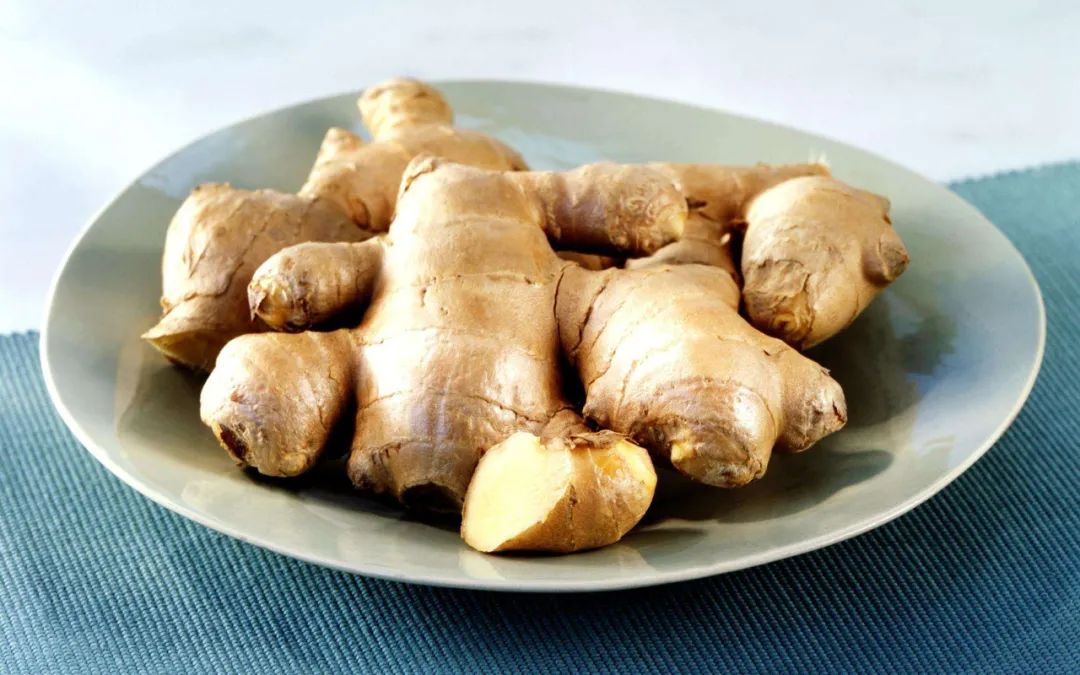
Next, we discuss fresh ginger, which is frequently used in the “Shang Han Lun”. The combination of fresh ginger and jujube (Da Zao) appears often. Later, the physician Tao Hongjing recorded in his “Ming Yi Bie Lu”: “Fresh ginger, with a spicy and slightly warm flavor, is used for cold damage, headache, nasal congestion, cough with counterflow of qi, and stopping vomiting.” Compared to dried ginger, fresh ginger has a stronger effect in dispersing cold and is suitable for exterior wind-cold conditions, while dried ginger is better for middle-jiao spleen and stomach deficiency and cold conditions.Moreover, fresh ginger can also detoxify fish and crab poison and counteract the toxicity of raw Pinellia (Ban Xia). The combination of fresh ginger and Pinellia is also a classic pairing. The “Jin Gui Yao Lue” states: “Both Pinellia and fresh ginger juice are good at stopping vomiting; when used together, the effect is even better; they also have the function of opening the appetite and harmonizing the middle. It is used for disharmony of stomach qi, vomiting, and restlessness.”The first formula in the “Shang Han Lun”, Gui Zhi Tang, is used for exterior wind-cold and wind evil causing headache, fever, sweating, and aversion to wind, and it uses the combination of fresh ginger and jujube.Processed Ginger (Pao Jiang)
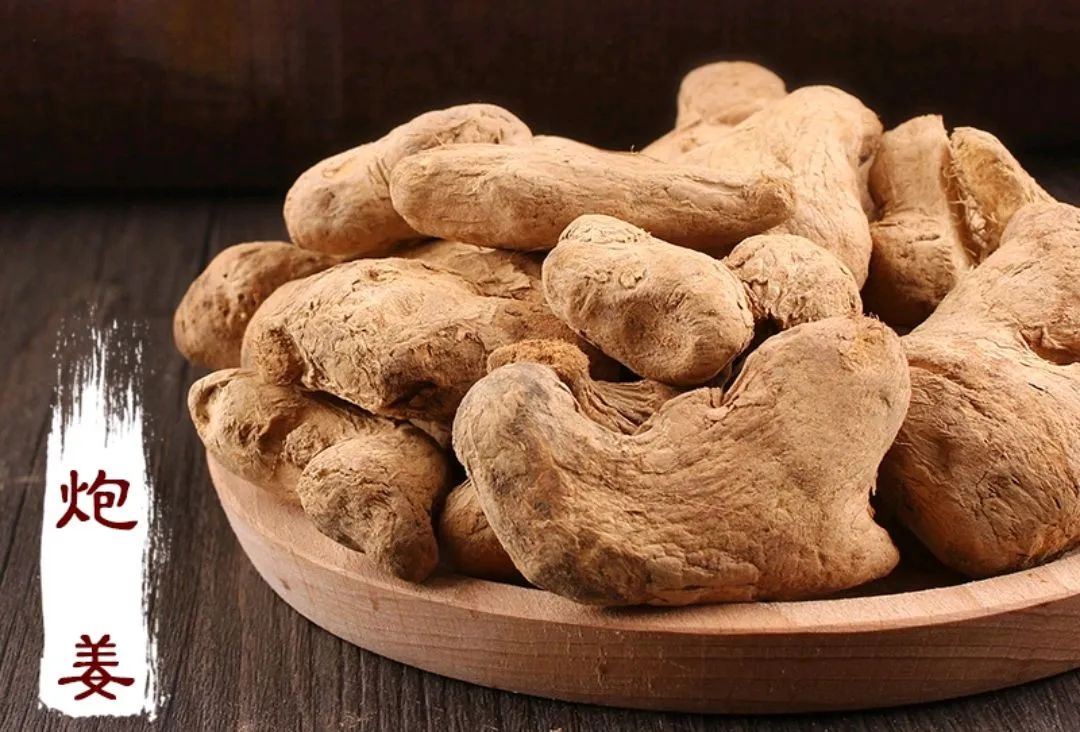
Processed ginger is made by stir-frying dried ginger with hot sand until the surface bulges and turns brown. It is also first recorded in the “Shang Han Lun”, has a warming nature, and a spicy flavor. It enters the spleen, stomach, and kidney meridians. Its effects include warming the meridians and stopping bleeding, and warming the middle and stopping pain. It is mainly used for yang deficiency with blood loss, metrorrhagia, abdominal pain, and vomiting and diarrhea.The “Jin Gui Yao Lue” records the Gan Cao Gan Jiang Tang, which actually uses processed dried ginger to treat lung deficiency with cold, characterized by expectoration of foamy saliva and frequent urination; the absence of cough is a key point for differential diagnosis. The original text states: “Four taels of licorice, two taels of roasted dried ginger, stir-fried, with three sheng of water, boil to obtain one sheng and five cups, remove the dregs, and take warm in two doses.” Processed dried ginger has a stronger effect in warming yang and protecting the middle, but a weaker dispersing power.Ginger Charcoal (Jiang Tan)
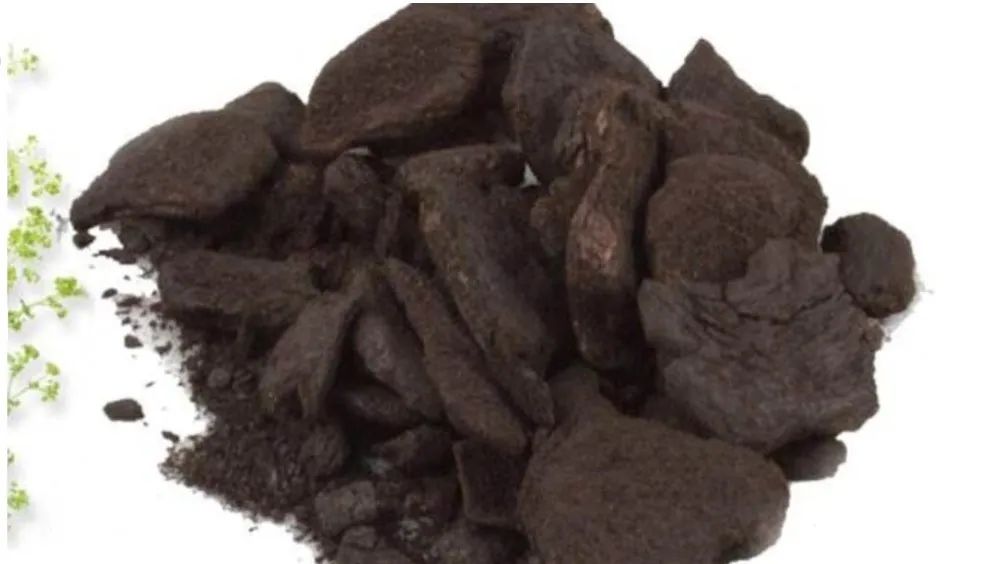
Ginger charcoal is first recorded in the Song Dynasty and is a product formed by frying ginger into charcoal. It is actually a classification of processed ginger, but the fried charcoal ginger is more inclined to stop bleeding, as charcoal itself has a significant effect in stopping bleeding.
Regarding the hemostatic effect of ginger charcoal, many physicians throughout history have discussed it. For example, the “Bencao Jing Shu” states, “The mention of stopping bleeding refers to blood deficiency causing heat; heat causes reckless movement. Fried dried ginger can guide various blood-tonifying herbs into the yin aspect; when blood is replenished, yin is generated, and heat retreats, preventing blood from moving recklessly.”The “National Standard for the Processing of Chinese Medicinal Herbs” also requires that ginger charcoal be distinguished from processed ginger: “Ginger charcoal warms the meridians and stops bleeding, primarily treating vomiting blood, metrorrhagia, and yin deficiency with blood loss.”Galangal (Gao Liang Jiang)
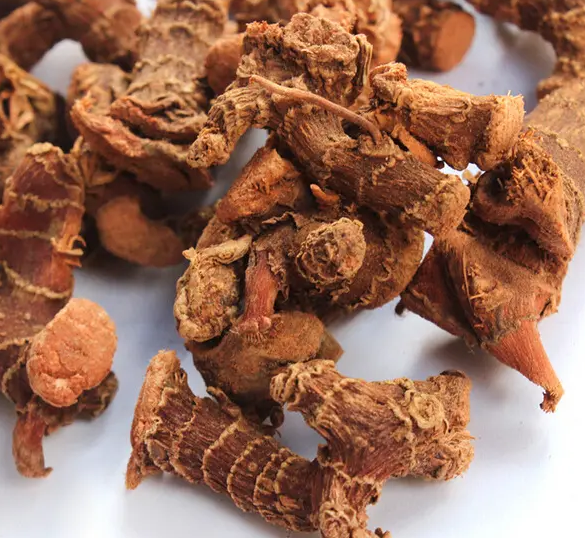
Strictly speaking, galangal is not a product of dried ginger, as it comes from the galangal plant, has a warming nature and a spicy flavor. Its effects include warming the stomach, dispersing cold, stopping pain, and stopping vomiting. Galangal is first recorded in Tao Hongjing’s “Ming Yi Bie Lu” as a good warming medicine for the stomach. The “Bie Lu” states, “It is warm in nature and is used for sudden cold, cold counterflow in the stomach, and cholera abdominal pain.”In summary, fresh ginger, dried ginger, and processed ginger gradually increase in warming effects while decreasing in cold-dispersing effects. Ginger charcoal is more inclined to warm the meridians and stop bleeding. Although galangal is a close relative, its main effects are similar to dried ginger, but galangal emphasizes warming and dispersing cold, while dried ginger focuses on rescuing yang and reversing counterflow. Galangal is more potent and should not be taken for long periods, which is why Tao Hongjing classified it as a medium-grade herb, while dried ginger is classified as a superior herb.
Note: (Copyright statement: This article’s content has been organized by the editor from online sources, and the copyright belongs to the original author. If there is any infringement, please contact the editor, who will delete it promptly. This platform aims to disseminate health preservation knowledge.)
Likes are a form of encouragement | Sharing is the best support

